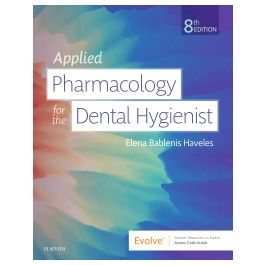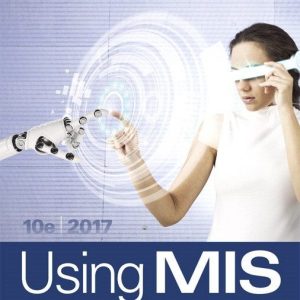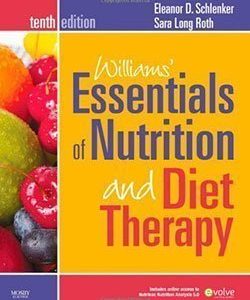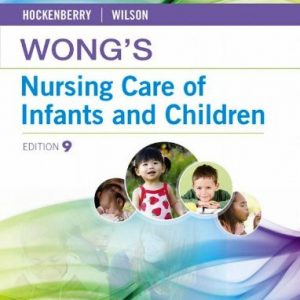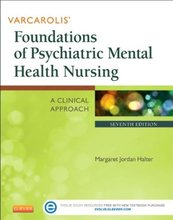This is completed downloadable of Test Bank for Applied Pharmacology for the Dental Hygienist 8th Edition by Haveles
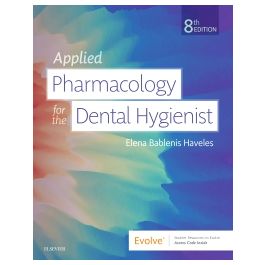
Product Details:
- ISBN-10 : 0323595391
- ISBN-13 : 978-0323595391
- Author;
With a focus on the most commonly used drugs in dentistry, Applied Pharmacology for the Dental Hygienist, 8th Editionprovides you with an in-depth understanding of the pharmacologic principles needed for safe and effective dental treatment and oral health care. It discusses drug properties and mechanisms of action, dosages, intended effects, interactions, and adverse reactions – both for the medications a patient may already be taking and for the drugs prescribed by the dentist. This new edition has been updated throughout to give you a firm foundation in pharmacology in order to assess and educate patients so they can maintain optimal oral health!
- IMPROVED! Test Bank with cognitive leveling based on Bloom’s Taxonomy mapped to the National Board Dental Hygiene Examination (NBDHE) blueprint.
- Comprehensive coverage with a dental focus provides you with an in-depth understanding of the most commonly used drugs, how they work, and how they affect patients’ oral health and dental treatment options.
- Multiple opportunities for classroom and board exam prep offers summaries and review questions at the end of each chapter, helping you to assess your knowledge of the material.
- Key terms are bolded and in color within each chapter and defined in a handy glossary.
- Full-color design engages the reader and includes additional illustrationsshowing basic principles and internal processes, along with photographs of oral conditions and side effects.
- Separate drug index provides easy look-up of specific drugs and types of drugs.
- Quick-reference appendixes include resources such as the top 200 drugs, medical acronyms, and information on herbal and dietary supplements.
- NEW! Updated drug content throughout, including new side effects and warnings for many commonly seen drugs.
- NEW! Elsevier Animation Collection clips on Evolve includes systemic anatomy and physiology.
Table of Content:
- Part I: General Principles
- 1: Information, Sources, Regulatory Agencies, Drug Legislation, and Prescription Writing
- History
- Role of the dental hygienist
- Sources of information
- Drug names
- Federal regulations and regulatory agencies
- Clinical evaluation of a new drug
- Drug legislation
- Prescription writing
- Dental hygiene considerations
- Academic skills assessment
- Clinical applications
- 2: Drug Action and Handling
- Characterization of drug action
- Mechanism of action of drugs
- Pharmacokinetics
- Clinical pharmacokinetics
- Factors that alter drug effects
- Routes of administration and dose forms
- Dental hygiene considerations
- Academic skills assessment
- Clinical case study
- 3: Adverse Reactions
- Definitions and classifications
- Clinical manifestations of adverse reactions
- Toxicologic evaluation of drugs
- Recognizing adverse drug effects
- Dental hygiene considerations
- Academic skills assessment
- Clinical case study
- Part II: Drugs Used in Dentistry
- 4: Autonomic Drugs
- Autonomic nervous system
- Parasympathetic autonomic nervous system
- Sympathetic autonomic nervous system
- Dental hygiene considerations
- Academic skills assessment
- Clinical case study
- 5: Nonopioid (Nonnarcotic) Analgesics
- Pain
- Classification
- Salicylates
- Nonsteroidal antiinflammatory drugs
- Acetaminophen
- Drugs used to treat gout
- Drugs used to treat arthritis
- Dental hygiene considerations
- Academic skills assessment
- Clinical case study
- 6: Opioid (Narcotic) Analgesics and Antagonists
- History
- Classification
- Mechanism of action
- Pharmacokinetics
- Pharmacologic effects
- Adverse reactions
- Specific opioids
- Dental use of opioids
- Chronic dental pain and opioid use
- Dental hygiene considerations
- Academic skills assessment
- Clinical case studies
- 7: Antiinfective Agents
- Dental infection “evolution”
- Definitions
- Infection
- Resistance
- Indications for antimicrobial agents
- General adverse reactions and disadvantages associated with antiinfective agents
- Penicillins
- Cephalosporins
- Macrolides
- Tetracyclines
- Clindamycin
- Metronidazole
- Rational use of antiinfective agents in dentistry
- Antimicrobial agents for nondental use
- Antituberculosis agents
- Topical antibiotics
- Antibiotic prophylaxis used in dentistry
- Dental hygiene considerations
- Academic skills assessment
- Clinical case study
- 8: Antifungal and Antiviral Agents
- Antifungal agents
- Antiviral agents
- Dental hygiene considerations
- Academic skills assessment
- Clinical case study
- 9: Local Anesthetics
- History
- Ideal local anesthetic
- Chemistry
- Mechanism of action
- Pharmacokinetics
- Pharmacologic effects
- Adverse reactions
- Composition of local anesthetic solutions
- Local anesthetic agents
- Vasoconstrictors
- Choice of local anesthetic
- Topical anesthetics
- Doses of local anesthetic and vasoconstrictor
- Dental hygiene considerations
- Academic skills assessment
- Clinical case study
- 10: General Anesthetics
- History
- Mechanism of action
- Adverse reactions
- General anesthetics
- Balanced general anesthesia
- Dental hygiene considerations
- Academic skills assessment
- Clinical case study
- 11: Antianxiety Agents
- Definitions
- Benzodiazepines
- Mechanism of action
- Barbiturates
- Nonbenzodiazepine-nonbarbiturate sedative-hypnotics
- Nonbenzodiazepine Receptor Hypnotics
- Melatonin receptor agonist
- Melatonin
- Orexin receptor antagonist
- Centrally acting muscle relaxants
- Miscellaneous agents
- General comments about antianxiety agents
- Dental hygiene considerations
- Academic skills assessment
- Clinical case study
- Part III: Drugs That May Alter Dental Treatment
- 12: Drugs for the Treatment of Cardiovascular Diseases
- Dental implications of cardiovascular disease
- Heart failure
- Angiotensin II receptor neprilysin inhibitor
- If Channel inhibitor
- Cardiac glycosides
- Antiarrhythmic agents
- Antianginal drugs
- Antihypertensive agents
- Antihyperlipidemic agents
- Proprotein Convertase Subtilisin/Kexin Type 9 Inhibitors
- Drugs that affect blood coagulation
- Thienopyridines
- Drugs that increase blood clotting
- Dental hygiene considerations
- Academic skills assessment
- Clinical case study
- 13: Drugs for the Treatment of Gastrointestinal Disorders
- Gastrointestinal drugs
- Drugs used to treat gastrointestinal diseases
- Celiac disease
- Dental hygiene considerations
- Academic skills assessment
- Clinical case study
- 14: Drugs for the Treatment of Seizure Disorders
- Epilepsy
- Drug therapy of patients with epilepsy
- Dental treatment of the patient with epilepsy
- Nonseizure uses of antiepileptics
- Dental hygiene considerations
- Academic skills assessment
- Clinical case study
- 15: Drugs for the Treatment of Central Nervous System Disorders
- Psychiatric disorders
- Antipsychotic agents
- Antidepressant agents
- Drugs for treatment of bipolar disorder
- Dental hygiene considerations
- Academic skills assessment
- Clinical case study
- 16: Adrenocorticosteroids
- Mechanism of release
- Classification
- Definitions
- Routes of administration
- Mechanism of action
- Pharmacologic effects
- Adverse reactions
- Uses
- Corticosteroid products
- Dental implications
- Dental hygiene considerations
- Academic skills assessment
- Clinical case study
- 17: Drugs for the Treatment of Respiratory Disorders and Allergic Rhinitis
- Respiratory diseases
- Drugs used to treat respiratory diseases
- Dental implications of the respiratory drugs
- Allergic Rhinitis
- Dental hygiene considerations
- Academic skills assessment
- Clinical case study
- Clinical case study
- 18: Drugs for the Treatment of Diabetes Mellitus
- Pancreatic hormones
- Diabetes mellitus
- Drugs used to manage diabetes
- Treatment of hypoglycemia
- Dental hygiene considerations
- Academic skills assesment
- Clinical case study
- 19: Drugs for the Treatment of Other Endocrine Disorders
- Pituitary hormones
- Thyroid hormones
- Female sex hormones
- Male sex hormones
- Other agents that affect sex hormone systems
- Dental hygiene considerations
- Academic skills assessment
- Clinical case study
- 20: Antineoplastic Drugs
- Use of antineoplastic agents
- Mechanisms of action
- Classification
- Adverse drug effects
- Combinations
- Dental implications
- Dental hygiene considerations
- Academic skills assessment
- Clinical case study
- Part IV: Special Situations
- 21: Emergency Drugs
- General measures
- Categories of emergencies
- Emergency kit for the dental office
- Dental hygiene considerations
- Academic skills assessment
- Clinical case study
- 22: Pregnancy and Breastfeeding
- General principles
- Pregnancy
- Breastfeeding
- Dental drugs
- Dental hygiene considerations
- Academic skills assessment
- Clincial case study
- 23: Substance Use Disorders
- General considerations
- Central nervous system depressants
- Sedative-Hypnotics
- Central nervous system stimulants
- Psychedelics (hallucinogens)
- Identifying the substance user
- The impaired dental hygienist
- Dental hygiene considerations
- Academic skills assessment
- Clinical case study
- 24: Natural/Herbal Products and Dietary Supplements
- Limited regulation
- Safety of herbal and nutritional products
- Drug interactions
- Standardization of herbal products
- Good manufacturing practice
- Herbal supplements used in oral health care
- Dental hygiene considerations
- Academic skills assessment
- Clinical case study
- 25: Oral Conditions and Their Treatment
- Infectious lesions
- Immune reactions
- Miscellaneous oral conditions
- Inflammation
- Drug-induced oral side effects
- Agents commonly used to treat oral lesions
- Dental hygiene considerations
- Academic skills assessment
- Clinical case study
- 26: Hygiene-Related Oral Disorders
- Dental caries
- Gingivitis
- Tooth hypersensitivity
- Dental hygiene considerations
- Academic skills assessment
- Clinical case study
- Appendix A: Medical Acronyms
- Appendix B: Medical Terminology
- Appendix C: What If…
- What if … The patient is pregnant?
- What if … The patient is allergic to aspirin?
- What if … The patient is allergic to penicillin?
- What if … The patient is allergic to sulfites?
- What if … The patient is allergic to codeine?
- What if … The patient is allergic to latex?
- What if … The cardiac patient needs antibiotics? (See Chapter 7)
- What if …The patient with primary total joint replacement needs antibiotics? (see Chapter 7)
- What if … The patient is taking warfarin (Coumadin)? (see Chapter 12)
- Appendix D: Oral Manifestations: Xerostomia and Taste Changes
- Appendix E: Children’s Dose Calculations
- Calculation of children’s dose
- Discussion
- Example
- Glossary
- Drug Index
- Index

